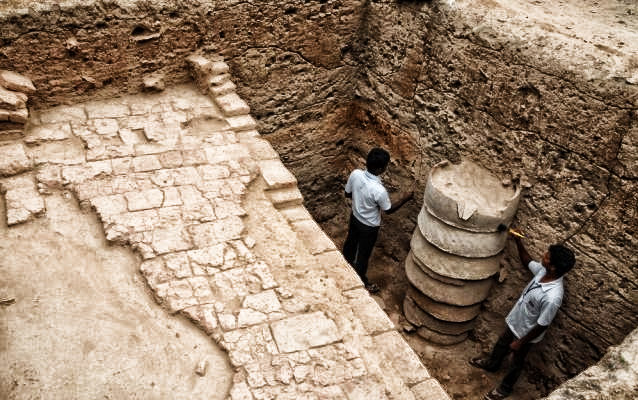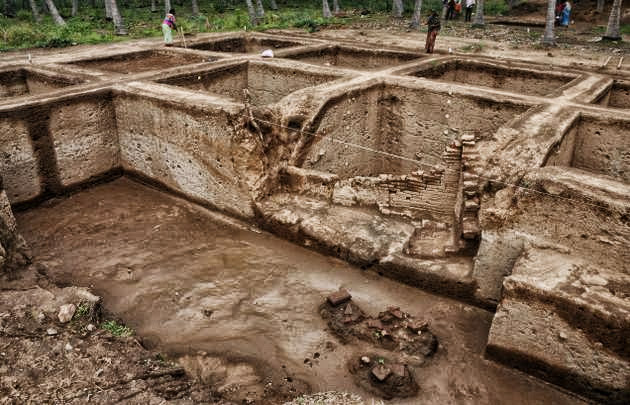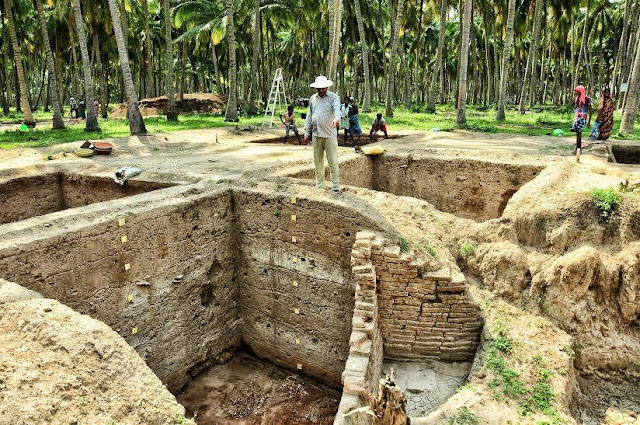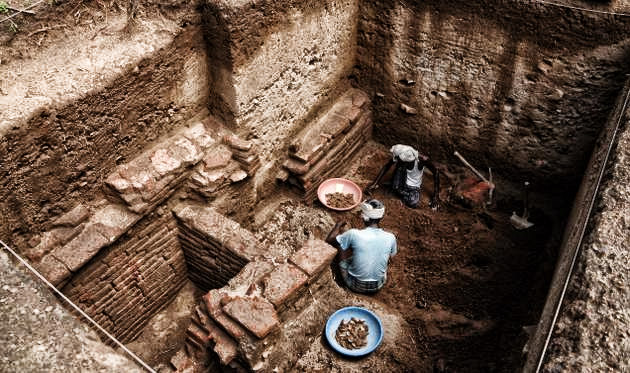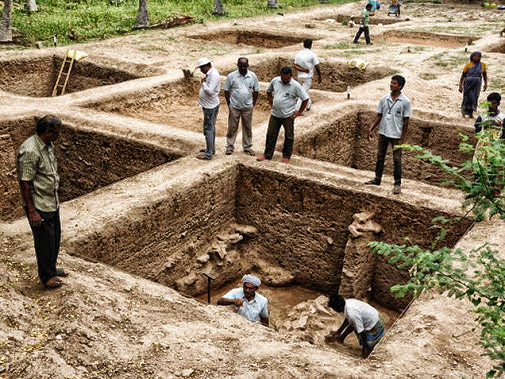A signet made of clay with ornamental design was among the about 3,000 ancient artefacts found at the Keezhadi Pallai Sandhaipudur village in this district during an excavation conducted by the team of experts from the Archaeological Survey of India (ASI).
According to ASI officials, the ancient settlement at the village, which was on the highway travelled by traders all over the world once, had an underground drainage system which was on par with the Harappan system. The sewage drains had been laid with “baked clay pipe lines”.
A team of ASI experts, including Superintendent K Amarnath Ramakrishna, Rajesh and Veeraraghavan were involved in the excavation work, which began on January 18 and is likely to continue till September this year.
“The drainage system is similar to what was found in Harappan civilisation site” they said. They claimed that the settlement was more than 2,500 years old, belonging to the ancient Pandiya era.
Apart from signets, arrows, iron and copper weapons, rare ornaments and scribbling nail, had been found, Amarnath Ramakrishna said. “It is very rare to find the constructions intact. The findings threw more light on the Sankakala Tamil civilisation”, he said.
“The signs of urban civilisation were more in Keezhadi village. In fact it was much more than Kaveri Poompattinam,” he said. The signets could have been used by the traders who sent their products with their seal, he said.
Source: PTI [May 30, 2016]
Read more at https://archaeologynewsnetwork.blogspot.com/2016/05/harappa-like-site-found-in-tamil-nadu.html#l2T5rYVjSukE92U4.99


